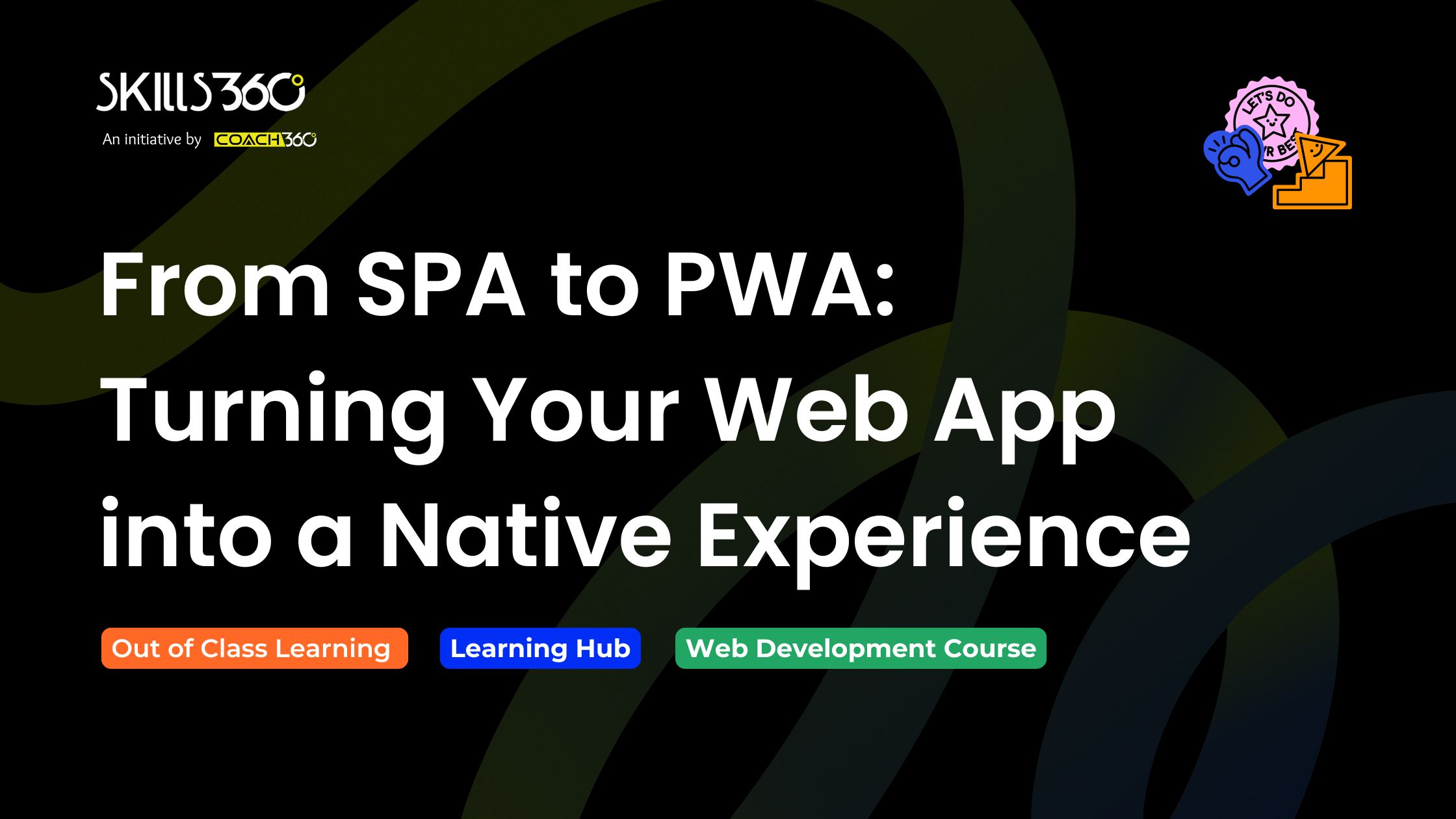- Featured article
- People at Skills360 01 - Sept 2025 | 12 min read

The way we access information on digital platforms has changed significantly over the past ten years. Classic web pages evolved into single-page applications (SPAs), which provide users with faster navigation and a seamless user experience. Today another standard is changing the game - Progressive Web Applications (or PWAs). PWAs take the best of web and mobile, allowing users to experience the benefits of native-developed applications without the push to download an application from the app stores.
This shift to PWAs represents a great opportunity for businesses and developers in Pakistan, specifically for those in the progressive web app training industry in Karachi. Learning to convert an SPA into a PWA can hugely impact user engagement, performance, and reach.
SPAs represented a significant advancement in web development. SPAs provided fantastic benefits by being able to load content dynamically, and as a result, browsing became faster, smoother, and more fluid. SPAs leveraged this approach to create some of the more popular platforms we now know and use today, including Gmail, Trello, and Slack.
Despite all these advantages, the SPA model had some major disadvantages.
PWAs eliminate these issues, and the way that they do this is that they incorporate modern features around user experience available in browsers. These features include service workers, caching, and push notifications. PWAs create an app-like experience in any browser directly from the web. This is the main reason that organizations and developers are getting into progressive web app training in Karachi; to develop skills surrounding a significant gap now available.
Turning your SPA into a PWA unlocks benefits for both users and businesses:
Thanks to service workers, PWAs can store key assets locally, allowing users to interact with your app even without internet connectivity.
PWAs can be installed directly on mobile devices, appearing with icons, splash screens, and full-screen capabilities, just like native apps.
Just like native apps, PWAs can send reminders, updates, and promotions to keep users engaged.
With one codebase, your PWA works seamlessly across desktop, iOS, and Android, saving businesses significant development costs.
Unlike native apps locked in app stores, PWAs are still web-based—search engines can crawl and rank them, increasing visibility.
If you currently have an SPA, you are already halfway there to implementing a PWA. It’s simple extension, with just a few steps:
A web app manifest is a JSON file that describes how your app will appear on a user’s device, including name, icons, theme colours, and orientation.
Service worker scripts that operate in the background control caching, offline content, and push notifications. For example, these scripts can cache your SPA’s shell so that the user can still interact with the app while offline.
PWAs will require a secure connection to ensure that data is not altered and protect users.
Use a tool like Google Lighthouse to measure how close your app is to being a PWA. In general, a fast loading time and responsive design will ensure that a PWA feels native-like.
Make sure that users can easily add your app to the home screen and that the installation type behaves the same way across platforms.
Karachi is rapidly becoming the center of digital innovation. Various start-ups, small and medium enterprises (SMEs), and enterprises are all investing in advanced web technologies so they can set themselves apart from their competition. By taking progressive web app (PWA) training in Karachi, developers will gain the feeling of accomplishment through the following ways:
The training will not only build confidence in their coding skills, but it will also cheerfully provide local developers with international contract work and projects that offer the greatest flexibility as the global demand for PWA skills continues to rise.
As the way users behave changes, businesses need to adapt. Customers don't want to download one app for each service; they want the efficiency of the web with the usability of mobile. PWAs are the solution.
If you are a developer in Karachi, moving from SPA to PWA is no longer about keeping up, it is about driving the next digital experience revolution. With the right progressive web app training in Karachi, you can build apps that are fast, reliable, engaging, and ready for the future.
If you are a developer or a business owner who wants to learn new skills or up your digital strategy, now is the time to adopt PWAs. Moving from SPA to PWA is not merely an upgrade; it is a shift that elevates your web app to the native experience your users are seeking.


Get curated emails on out of class learning and work on your skills on your free time.